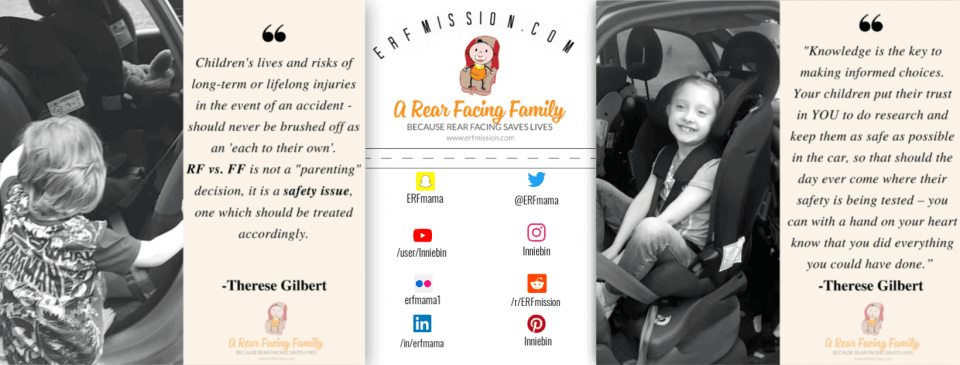We hope you find the answers you’re looking for on this page but if not, please feel free to get in touch. We are here to help!
When should I move my child out of the infant carrier?
We always recommend using the infant carrier for as long as possible before moving to the next stage car seat. Please check your child does not exceed the weight recommendation for your current infant seat and their head is contained within the seat. If in any doubt contact us for advice.

Will I find a seat to fit in my car?
Yes! We have not yet seen a car which is unsuitable for a rear facing seat. We have found solutions for even the smallest vehicles. We have an extensive database containing fitting guides for seats installed in most cars and can advise on the best solution for you and your family.
Where will my child be able to put their legs?
This is a commonly asked question, but once installed, rear facing car seats offer plenty of room for your child’s legs. Rear facing children are very comfortable and sit cross legged or frog legged position. This may look uncomfortable to an adult but children are much more flexible and they find this a relaxed sitting position. Some seats will provide more leg space than others so if you do have a tall child we can talk about the options. It should be noted that to date, there are no accounts of children breaking legs in a rear facing seat but there are sadly many examples of children with head and spinal injuries from a forward facing seat.
Rear Facing – where do their legs go?
How do I communicate with my child if they are rear facing?
A child who is forward facing can be a distraction because of the temptation for the driver to turn around and talk to them which can be very dangerous. This hazard is removed if the seat is rear facing thus making the journey safer. There are lots of mirrors available, which can be positioned inside the car so that you can see your child’s face and prevent the need for the driver or passenger to turn around.

Will my child get bored rear-facing?
Remember your child knows no other way. They have travelled in an infant carrier since the day they were born so they have never faced forward. There are plenty of toys on the market to help keep them entertained plus the view out the back window can be a lot more entertaining than the back of your front seat!
Turning From Forward Facing to Rear Facing – NO BIGGIE!
Are rear-facing seats more expensive than forward facing?
They are comparable in price to a good quality forward facing seat – but you can also get an extended rear facing car seat for as low as £60!
What is ISOfix?
ISOfix is strong anchoring points built into cars for an easy and secure fitting of child car seats. They are in every car produced since 2006 and are a significant improvement in safety. “ISOfix” stands for International Standards Organisation Fix. According to research by the German Insurance Institute, 96% of ISOfix car seats are properly installed, compared with only 30-40% of the traditional belted kind. Please note that not every ISOfix seat is compatible with every ISOfix fitted vehicle so always check the manufacturers’ car guide to make sure.
Is installation difficult?
Car seats of any kind can be a little difficult to install which is why 7 out of 10 car seats are incorrectly fitted in the UK. We are focused on rear facing car seats and are properly trained, so we can you show you exactly how to fit the seats making the experience as simple as possible. We are happy to demonstrate how to install the seat in your own car and we can provide comprehensive, simple to follow guides.
Does a car seat have to be fitted on the back seat?
NO. You can install the rear-facing seat on your front passenger seat, however, we stress that you MUST be able to turn the front passenger airbag OFF.

My car has underfloor storage compartments can we still rear-face?
Some seats will have a supporting leg which comes down from the back of the seat and this may be impeded by underfloor storage compartments. Advice will vary on which seat is best suited to which vehicle and this is dependent on both car seat and vehicle manufacturers guidelines. If your car has underfloor storage cavities please contact us for the most suitable solution.
What about rear end collision?
The risk of rear end collision is much lower than any other type of crash. Only a small percentage of traffic accidents are rear end impacts. In addition, rear end collisions tend to happen at much lower speeds, often when one vehicle is either stopped or nearly stopped, thus resulting in much lower impact speeds and reduced chance of injury. Frontal and side accidents are by far the most common of accidents and also the most severe as vehicles tend to be travelling at higher speeds towards each other. In both of these instances, your child will be 5 times safer.
Most car seats in the UK are still forward facing. Are they not safe enough?
All seats on sale in the UK must pass the ECE test set by the UN. However, the testing carried out does NOT take into account or measure the force that the neck, head and internal organs are subjected to should your car be involved in a crash situation. Please read our facts on why rear-facing seats are safer.
What are ‘tether straps’?
Tether straps are used to secure a rear facing child car seat in the back of a car. The straps wrap around the front seat of the car and then firmly lock the child seat behind them for a really secure, stable fit. Tether straps are used predominantly on non-ISOfix car seats, but every rear facing seat that can take a child up to 25kgs must have them. Please have a look at our “Installing your car seat” page for more information.
Is it easy to move a rear facing seat between multiple cars?
ISOfix certainly helps to move car seats easily between vehicles. If you have a non-ISOfix seat, it’s still possible to move the seat between cars but we would suggest purchasing an extra set of tether straps so that you can leave a set installed in each car.
What happens when my child outgrows their rear facing seat?
If you have left your child in the rear facing seat for the longest period of time possible i.e. 18kg/25kgs or 105cm (depending on which seat you have purchased) then they may be ready for their Highback Booster seat. Many of the Highback Booster seats have differing characteristics so we can assist in narrowing down the options depending on your individual needs.
High Back Boosters Are For Older Kids
If you have any questions not covered just let us know as we are always happy to help.
![]()
This article was originally written by Securatot LTD & is edited/published on ‘A Rear Facing Family’ with permission.
Securatot was the UK’s first ‘only rearfacing’ car seat specialist, born from a passion for promoting the benefits of rearfacing car seats. They have been instrumental in building the rear-facing seats market in the UK. Their strength was providing customised support and advice so that families could make the right decision for their needs. An incredible company with so much knowledge and an Ethos the European Car Seat Market should take a good look at!
Because of the change in the market – where car seats are sold through retailers who provide NO expert advice, they were forced to compete solely on price. This sadly made it impossible to sustain a business focused on rear-facing car seats and has now led to the unfortunate decision to close Securatot.
It’s a loss to everyone. The car seat world will never be the same. :'(
In Memoriam


Therese has completed the ‘Advanced Child Car Seat Training Course’ at TRL (Transport Research Lab) and is a CPD accredited car seat expert. She blogs about in-car safety, car seats, tips, reviews, giveaways and advice. She’s a mum on a mission to change the law and raise awareness. She is also a breastfeeding advocate and gentle parenting promoter who loves cloth nappies, baby-wearing, BLW and co-sleeping/bed-sharing.

